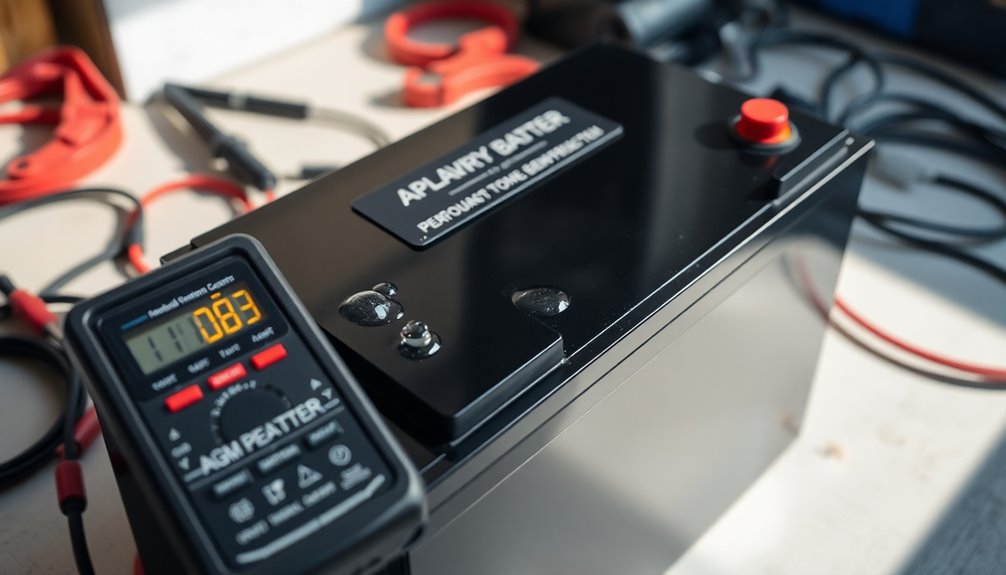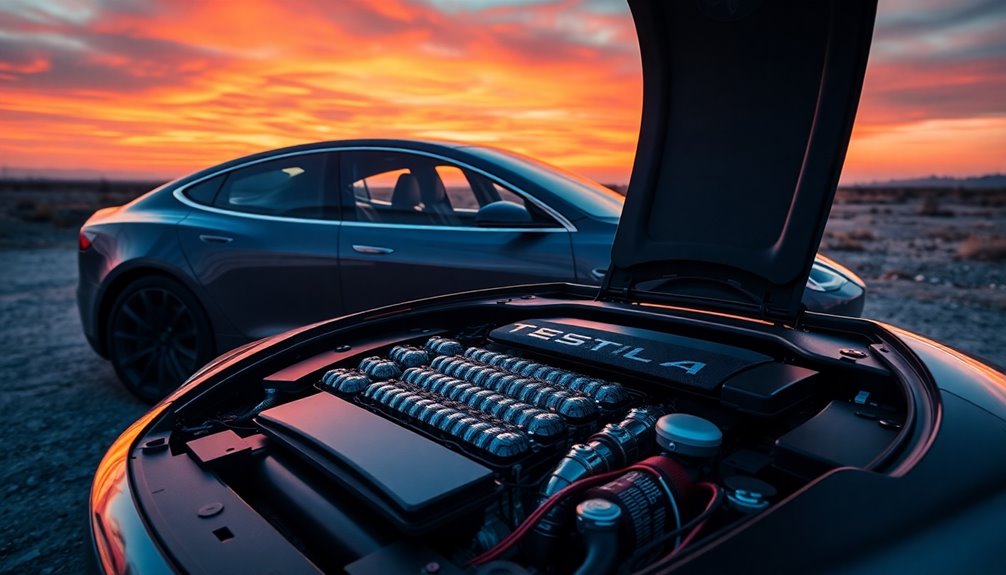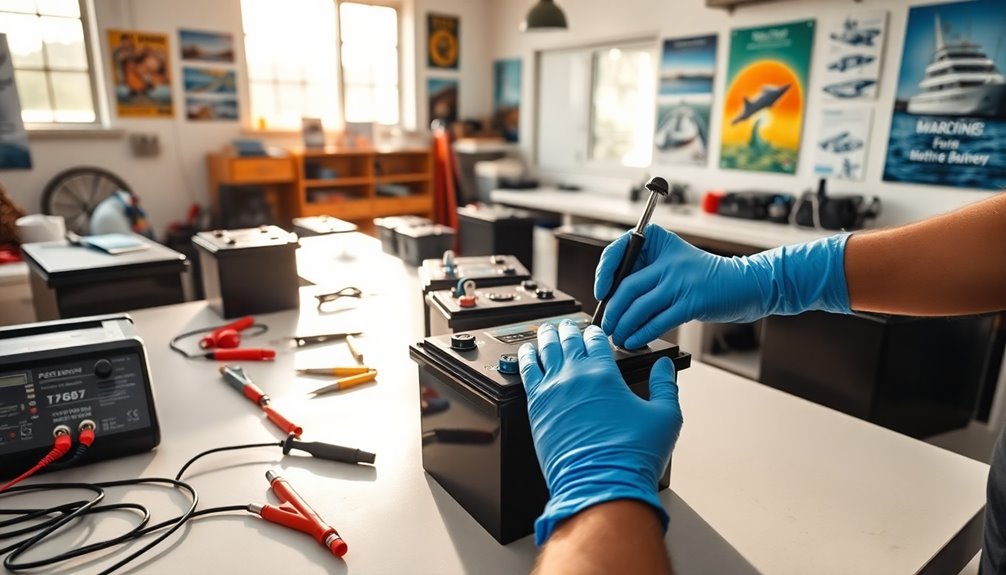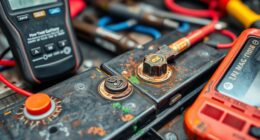AGM batteries are often better than traditional flooded batteries due to their impressive performance. With a lifespan of up to 10 years, they recharge faster and handle deep discharges effectively. Their maintenance-free design means you won't need to check water levels or monitor electrolytes, saving you time and effort. Plus, AGM batteries excel in extreme conditions, making them ideal for vehicles like RVs and boats. Although they can be pricier upfront, their durability and efficiency can justify the cost. If you're curious about other benefits and comparisons, there's plenty more to discover.
Key Takeaways
- AGM batteries have faster recharge rates and lower internal resistance, making them more efficient than traditional flooded batteries.
- They offer superior durability, maintaining performance in extreme temperatures and high-vibration environments.
- AGM batteries require no maintenance, simplifying usage compared to flooded batteries that need regular monitoring.
- They support deep cycling, allowing discharge up to 50% without damage, which is ideal for various applications.
- Despite higher initial costs, AGM batteries often provide longer lifespans and better reliability, justifying the investment over time.
Overview of AGM Batteries
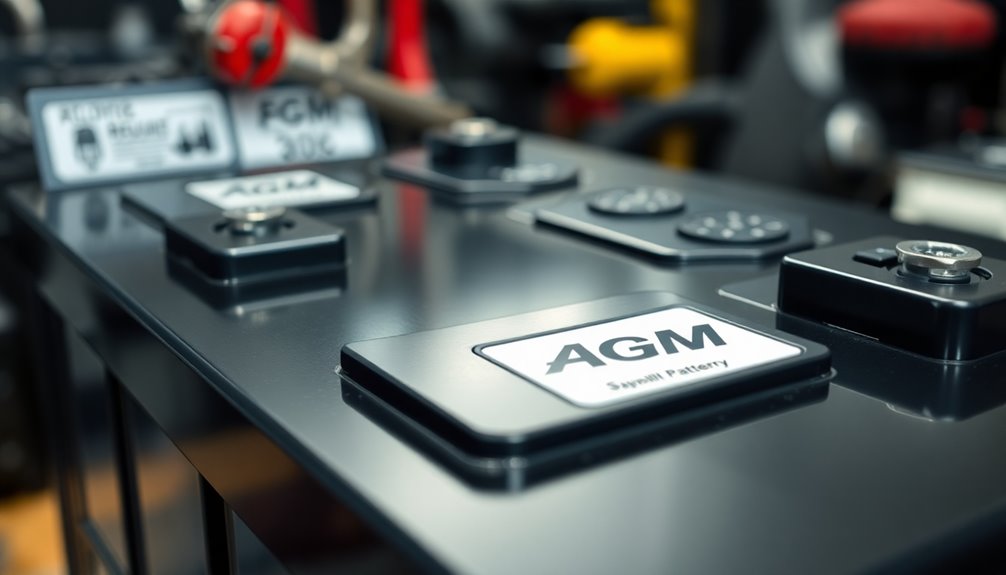
When you think about reliable battery options, AGM batteries stand out due to their unique design and performance features.
These Absorbed Glass Mat batteries use fiberglass mats to absorb the electrolyte, creating a spill-proof design that's perfect for various applications. Developed in the 1970s, AGM batteries quickly gained popularity, particularly in military and heavy vehicle sectors, thanks to their maintenance-free operation and reliability.
Their advanced construction enhances contact with lead plates, boosting power output and enabling strong bursts of energy for starting engines. Unlike traditional flooded batteries, AGM batteries recharge up to five times faster, making them highly efficient.
Plus, they withstand extreme temperatures and vibrations, ensuring durability in demanding environments.
Key Advantages of AGM Batteries
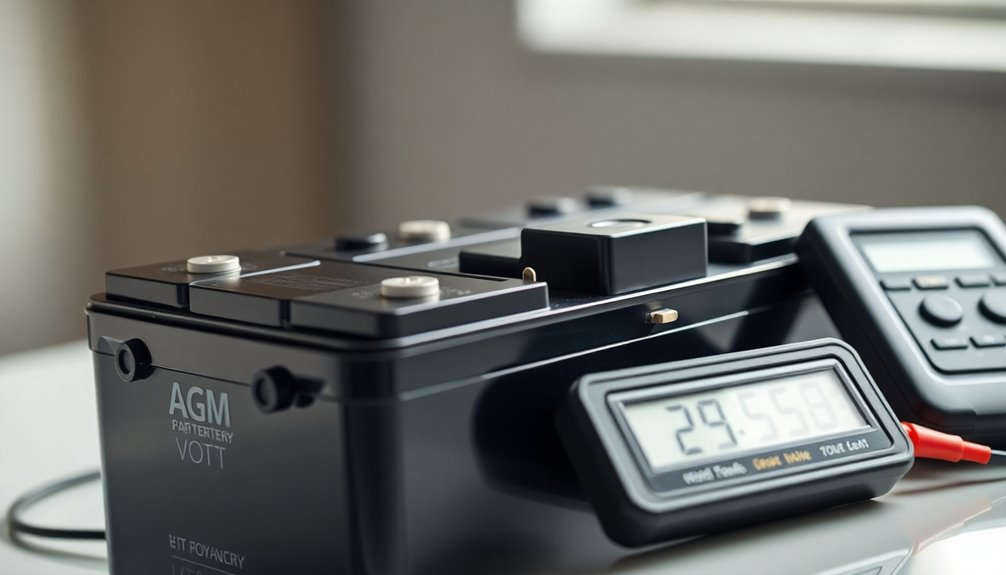
One of the standout features of AGM batteries is their impressive versatility, which makes them suitable for numerous applications.
Their absorbed glass mat design guarantees they're spill-proof, allowing you to place them almost anywhere without worrying about leaks.
You'll appreciate the notably shorter charging time, as AGM batteries can recharge up to five times faster than flooded batteries of similar capacity.
With lower internal resistance—sometimes as low as 2%—these batteries can deliver higher power output and recover quickly from deep discharges.
Plus, their durability means they withstand intense vibrations and extreme temperatures, making them perfect for motorcycles, race cars, RVs, and marine environments.
With a lifespan of up to a decade, AGM batteries truly outshine traditional options.
Technical Performance Insights
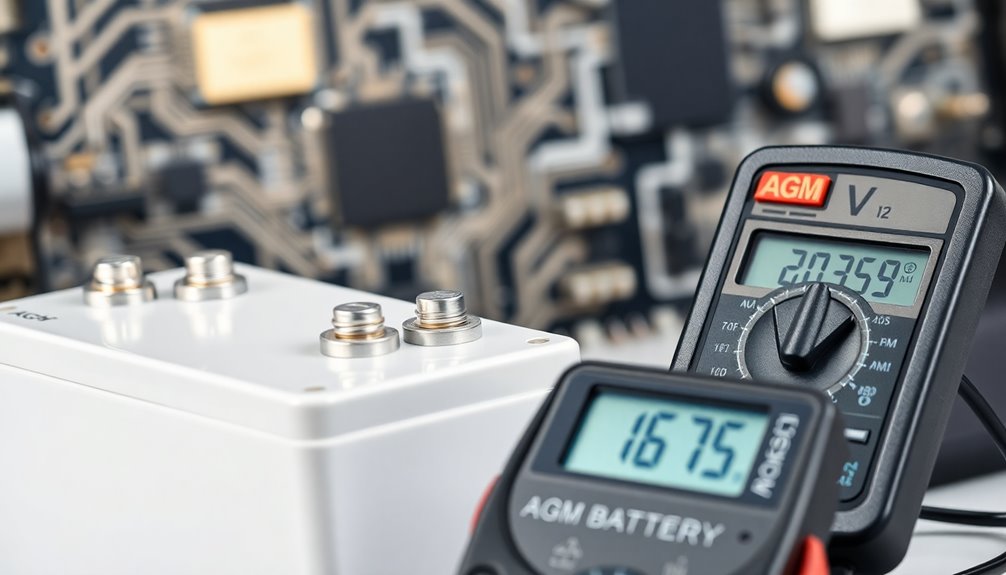
AGM batteries stand out in technical performance, primarily due to their low internal resistance, which enables them to charge up to five times faster than flooded batteries of similar capacity. This efficiency is particularly beneficial in applications requiring quick energy delivery.
| Feature | AGM Batteries | Flooded Batteries |
|---|---|---|
| Internal Resistance | Low | Higher |
| Deep Cycling Capability | Discharge to 50% without damage | Risks failure at 50% |
| Self-Discharge Rate | Minimal | Higher |
| Durability | Enhanced with sandwich design | Standard construction |
| Temperature Resistance | Excellent for extreme conditions | Limited |
With their ability to excel in deep cycling and maintain consistent power output, AGM batteries are ideal for high-performance applications, ensuring reliability even during periods of inactivity.
Limitations of AGM Batteries

Although AGM batteries offer impressive advantages, they also come with several limitations that users should consider. One major limitation is their higher production cost compared to flooded lead-acid batteries, making them a pricier option upfront.
Over time, AGM batteries exhibit a gradual decline in charging capacity, especially when compared to gel batteries, which can impact performance. Their low tolerance for overcharging can lead to a shortened lifespan and potential damage, so careful charging practices are essential.
Additionally, specific energy limitations restrict their use in devices needing long-term moderate loads, making them less versatile. While AGM batteries excel in deep cycling, it's best to limit their discharge to 50% capacity for peak reliability and longevity.
Market Trends and Demand

You'll notice that AGM batteries are becoming increasingly popular across various industries, particularly in RVs and marine applications.
As you explore the market, it's clear that while AGM technology is gaining traction, it faces stiff competition from lithium and gel batteries.
Understanding these trends can help you make informed choices in a rapidly evolving landscape.
Growing Industry Adoption
As the automotive and recreational vehicle markets evolve, the adoption of AGM batteries is rapidly gaining momentum, evidenced by over 50 million vehicles in the US currently relying on this technology.
Their growing popularity stems from their high-power output and short charging times, making them ideal for vehicles equipped with advanced electronic systems.
In the RV and marine industries, AGM batteries are increasingly favored for their spill-proof design and superior performance under tough conditions.
However, consumer education plays a significant role in this shift. As you become more informed about the long-term performance advantages of AGM batteries, despite their higher initial costs, you'll understand why more industries are embracing this innovative technology.
Competitive Battery Technologies
With the increasing demand for reliable and efficient power sources, AGM batteries are maneuvering a competitive landscape that includes advanced technologies like lithium batteries.
As you explore AGM battery vs. flooded lead-acid car options, you'll notice a shift in consumer preferences toward maintenance-free solutions. AGM batteries are gaining traction in sectors like RV and marine industries, but lithium batteries are also appealing due to their lightweight and high energy density.
Cost is a significant factor; while AGM batteries might've a higher upfront price, their long-term battery performance and lifespan can justify the investment.
Ongoing technological advancements aim to enhance AGM efficiency and lower production costs, bolstering their position in the competitive battery technologies market. Additionally, diversification strategy in energy storage solutions can help consumers choose the best battery for their specific needs.
Applications Across Industries
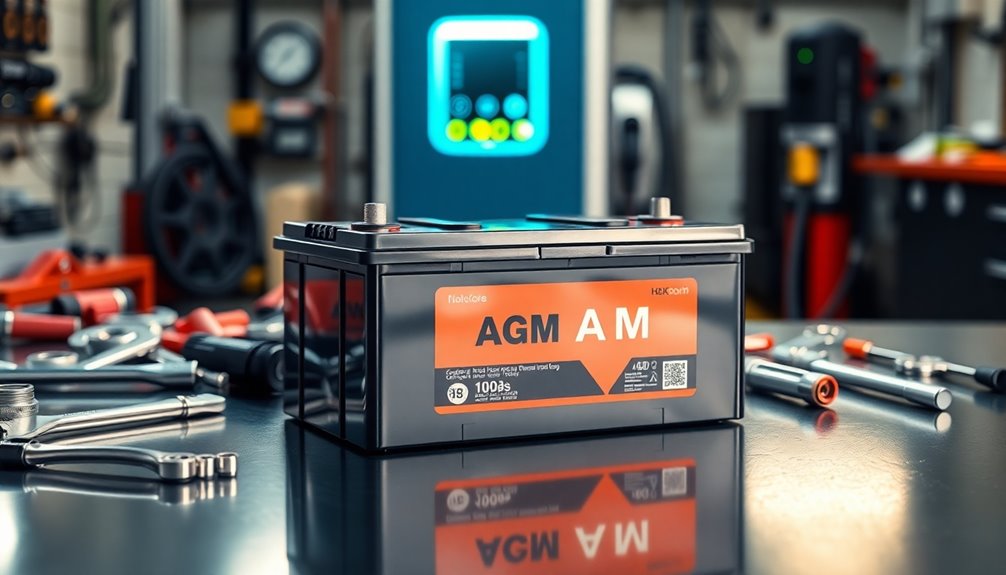
While AGM batteries find their place in various industries, their versatility truly shines in applications such as recreational vehicles and marine environments.
In the automotive sector, over 50 million vehicles, including popular models like the Ford F-150 and Toyota Corolla, utilize AGM technology for reliable starting power and electronic systems. Their sealed, spill-proof design allows for flexible placement, making them perfect for confined battery compartments.
In marine settings, AGM batteries power essential electronics like fish finders and refrigeration systems, providing steady power and high bursts for starting.
Additionally, they've gained traction in renewable energy setups and off-grid power systems, where their low maintenance and efficient energy delivery make them a top choice for energy storage solutions.
Charging and Maintenance Tips
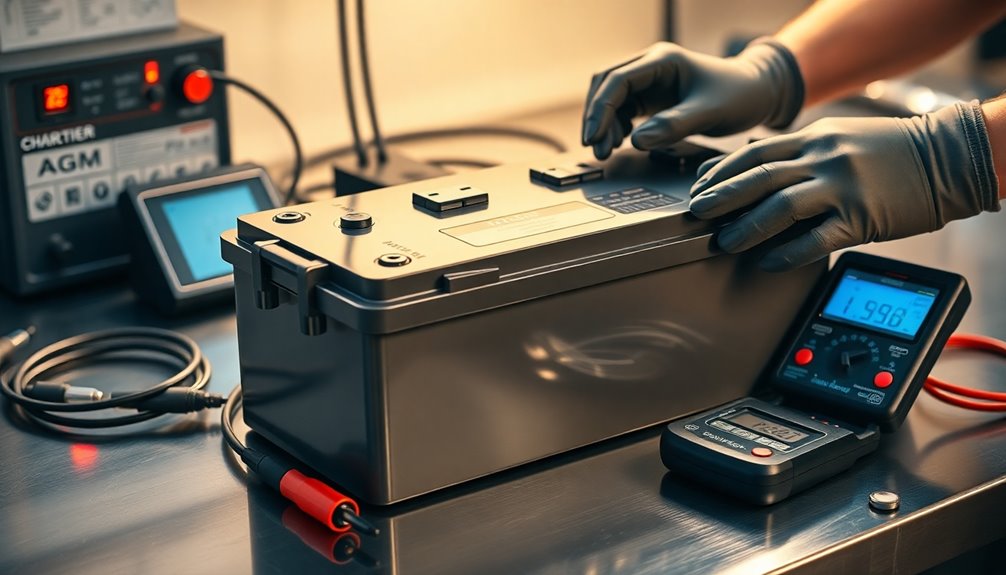
To guarantee your AGM battery performs at its best, proper charging and maintenance are essential. AGM batteries recharge faster than flooded ones, taking about 3.5 hours to go from 80% to full. Keep your charging voltage below 14 volts to prevent damage and check your charging system regularly to avoid undercharging, which can reduce lifespan.
| Maintenance Tip | Action Needed | Frequency |
|---|---|---|
| Check Charging Voltage | Verify it stays below 14 volts | Every charge cycle |
| Monitor Charging System | Inspect for proper operation | Monthly |
| Limit Discharge | Avoid deep discharges (over 50%) | Every use |
| General Inspection | Look for signs of wear | Quarterly |
AGM vs. Flooded Batteries
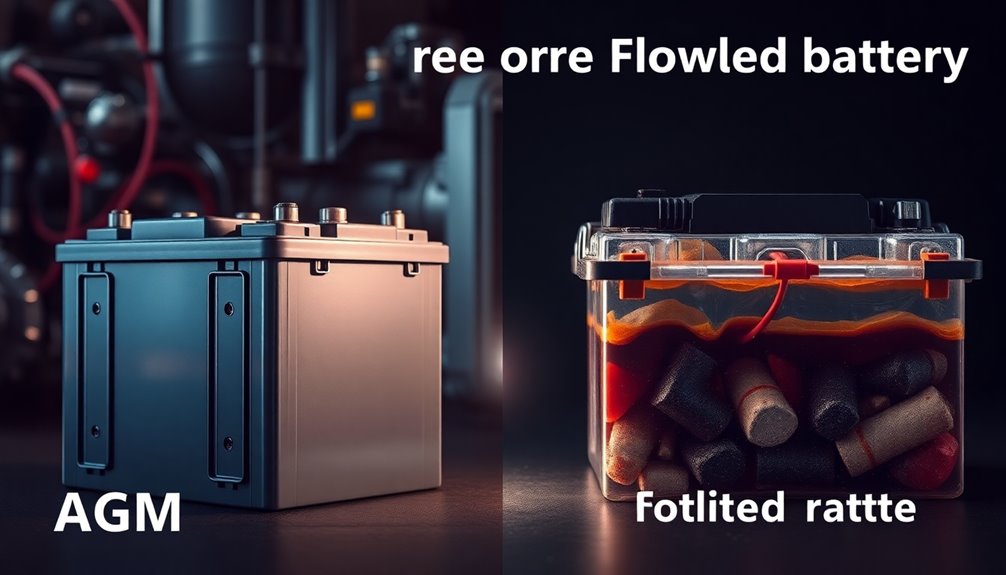
When comparing AGM and flooded batteries, you'll notice significant differences in performance, cost, and maintenance.
AGM batteries offer faster charging and longer lifespans, while flooded batteries require more upkeep and come with shorter life expectancies.
Understanding these factors can help you make an informed choice based on your needs.
Performance Comparison
AGM batteries clearly outperform flooded batteries in several key performance metrics, making them a top choice for many applications. Here's a quick comparison of their performance:
| Feature | AGM Batteries | Flooded Batteries |
|---|---|---|
| Internal Resistance | 2% | 10-15% |
| Lifespan | 3-10 years | 3-5 years |
| Deep Discharge Recovery | Fast | Slow |
| Maintenance | Low | High |
With lower internal resistance, AGM batteries provide better voltage output and faster recharge times. They also excel in extreme temperatures and require minimal maintenance. In contrast, flooded batteries may struggle in harsh conditions and demand regular checks. Overall, AGM batteries offer superior performance and longer lifespan, making them an excellent investment.
Cost Analysis
Choosing between AGM and flooded batteries often boils down to cost.
While AGM batteries can be 40-100% pricier upfront, their longer lifespan and warranty might offer better value in the long run.
Here's what you should consider:
- AGM batteries last up to 10 years, while lead-acid batteries only last 3-5 years.
- You may find AGM models with warranties up to 3 years.
- High-end AGM brands can cost twice as much but offer premium performance.
- Two lead-acid batteries from retailers like Costco can match one AGM's total cost.
- Budget-conscious applications often favor lead-acid batteries for immediate cost-effectiveness.
In the AGM vs. flooded batteries debate, weigh the initial investment against potential long-term savings.
Maintenance Requirements
While considering battery options, it's crucial to understand the maintenance requirements of AGM and flooded batteries.
AGM batteries are maintenance-free, meaning you won't need to check electrolyte levels or add water. This feature allows for versatile installation without the risk of spillage.
In contrast, flooded batteries require regular monitoring and must be kept upright to prevent leaks. They also lose water through evaporation, demanding consistent upkeep to maintain peak performance.
AGM batteries excel in low self-discharge applications and have minimal maintenance needs, unlike flooded batteries, which are more forgiving but still require attention to avoid sulfation.
Ultimately, if you're looking for convenience and reliability, AGM batteries are the clear choice.
Cost Considerations

When considering battery options, it's essential to recognize that AGM batteries come with a significant upfront cost, typically ranging from 40% to 100% more than regular lead-acid batteries.
For instance, two lead-acid batteries from Costco might equal the cost of one AGM battery.
However, the long-term benefits can make AGM batteries more appealing:
- Longer lifespan
- Lower maintenance requirements
- Extended warranty terms (up to 3 years)
- Potential cost-effectiveness over time
- High-end brands may double the average AGM battery cost
While you'll pay more initially, these advantages can lead to savings in the long run, making AGM batteries a worthy investment for those seeking reliability and efficiency.
Future of AGM Technology
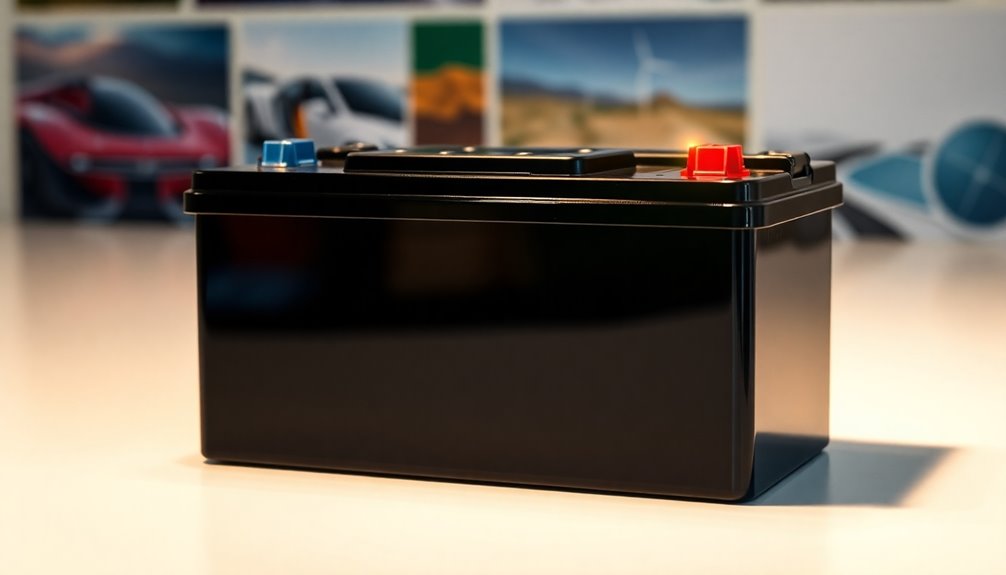
As you look ahead, you'll notice that technological advancements are set to transform AGM batteries considerably.
With market trends pointing toward increased demand in sectors like electric vehicles and renewable energy, these batteries are becoming more versatile and efficient.
You're on the brink of witnessing a shift that could redefine how you think about energy storage solutions.
Technological Advancements Ahead
With ongoing advancements in AGM technology, researchers are dedicated to enhancing energy density and lowering production costs, making these batteries more competitive against lithium and gel options.
Here's what you can expect in the near future:
- Innovations in advanced glass fibers and electrolyte formulations for longer lifespan
- Integration of smart battery technologies for optimized charging and discharging
- Development of hybrid AGM designs to meet various power demands
- Adaptation for renewable energy storage, especially in off-grid and solar applications
- Improved performance under extreme conditions
These technological advancements promise to boost the effectiveness and versatility of AGM batteries, ensuring they remain a strong contender in the evolving battery landscape. Additionally, the growing demand for renewable energy solutions is likely to increase the need for reliable storage options like AGM batteries.
Keep an eye on these trends as they unfold!
Market Trends Analysis
Although AGM batteries are already popular in sectors like RVs and marine applications, their market is set to grow even further due to increasing demand for reliable power sources. Technological advancements and consumer education are key to this expansion, enabling users to appreciate the performance benefits of AGM batteries.
| Market Trends | Current Stats | Future Projections |
|---|---|---|
| Vehicles Using AGM | Over 50 million | Growth in all sectors |
| Efficiency Advancements | Ongoing Research | Lower costs ahead |
| Consumer Awareness | Rising importance | Informed decisions |
As consumers weigh initial costs against long-term performance benefits, the shift toward AGM technology reflects a significant trend in battery solutions. The future looks bright for AGM batteries!
Frequently Asked Questions
What Is the Main Disadvantage of an AGM Battery?
The main disadvantage of an AGM battery is its high production cost, which can be 40-100% more than traditional flooded lead-acid batteries.
You might also notice that AGM batteries can lose charging capacity over time, affecting longevity.
They don't tolerate overcharging well, either, as it can lead to valve failure.
Although they're maintenance-free, you'll need to charge them carefully to avoid performance issues, which can impact their reliability in critical situations.
Are AGM Batteries Really Better?
When it comes to AGM batteries, you're diving into a powerhouse of performance.
They often outshine traditional batteries with their quick charging and impressive lifespan.
Imagine having a reliable partner that thrives in extreme temperatures and can handle deep discharges without flinching.
Plus, their spill-proof design makes installation a breeze, no matter where you need them.
Why Do AGM Batteries Fail so Often?
AGM batteries often fail due to a few key factors.
If you overcharge them, it can lead to valve failure and dry out the electrolyte, shortening their lifespan.
You might also notice a decline in charging capacity over time, especially if you don't monitor them regularly.
Additionally, improper charging practices and environmental extremes can exacerbate issues.
If you leave them inactive for too long, sulfation can set in, reducing their effectiveness.
Is AGM Worth the Extra Money?
You might find that AGM batteries last up to ten years, while traditional lead-acid batteries typically last just three to five.
Given their longer lifespan and lower maintenance needs, they can be worth the investment. Although they cost more upfront, you'll enjoy faster charging and better performance in extreme conditions.
If you rely on heavy power demands, the extra money you spend could ultimately save you time and hassle.
Conclusion
In the world of batteries, AGM technology stands out like a beacon of reliability. With their impressive performance, low maintenance, and safety features, they're often the go-to choice for many applications. While they do have some limitations and can come at a higher cost, the value they bring is hard to ignore. As you weigh your options, consider how AGM batteries can power your needs effectively and keep you charged for whatever lies ahead!

